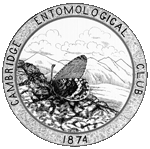
| January 2008: Psyche has a new publisher, Hindawi Publishing, and is accepting submissions |
Two New Oregon Chilopods of the Order Geophilida.
Psyche 60:37-40, 1953.
Full text (searchable PDF, 200K)
Durable link: http://psyche.entclub.org/60/60-037.html
The following unprocessed text is extracted from the PDF file, and is likely to be both incomplete and full of errors. Please consult the PDF file for the complete article.
TWO NEW OREGON CHILOPODS OF
THE ORDER GEOPHILIDA
BY RALPH V. CHAMBERLIN
University of Utah
Representatives of the two new centipeds described be- low were found in a collection belonging to the Oregon State College and submitted to me for study through the courtesy of Vincent D. Roth of that institution. HIMANTARIIDAE
The genus Stenophilus was proposed several years ago by the writer for several species of this family occurring in western America which, while obviously related closely to the European genera Meinertophilus and Latzel's Stig- matogaster (Haplophilus Cook), present some characters which would require substantial emendation of those genera to permit inclusion of the American forms. I am, therefore, retaining for our species the name Stenophilus, emended now from the original definition in the light of new species subsequently discovered. Stenophilus as far as now known differs from the European genera mentioned in lacking conspicuous sclerotic or chitinous lines on the prosternum and in lacking all paratergites. In Stenophilus ventral pores may be absent, present on a few anterior sternites, or on sternites of approximately the anterior half of the body (rothi n. sp.) . Sternal pouches such as are present in nearly all, if not all, European species of the genera men- tioned, have been detected in American forms only in S. coloradanus Chamb., in which they occur on segments 25 to 35.
American species referred to Stenophilus are now known from Colorado, Idaho, Montana, Oregon and California. They seem to be replaced farther south by species of Gosi- philus which are common in Mexico and the border states from California to Louisiana. From these species those of Stenophilzis are readily distinguished by the deeper, more angular, embayment of the labrum with its much stouter Pacht (>0:37-19 (1951). hup //psyche rinclub orgtW60-017.htnil
================================================================================
38 Psyche [March
teeth as well as by the details of the coxopleural region at caudal end.
Stenophilus rothi new species
Body and legs yellow throughout, the head but little darker. Head much wider than long (ad 11.59) and of the form shown in fig. 1. Antennae flattened, contiguous at base, the articles proportionately short and broad, the last one subequal to the two preceding taken together. Median excavation in labrum cutting through to base, the eight median teeth large and strongly sclerotized and laterad from these one or two weaker teeth or serrations on each side as show in fig. 2. Coxosternum of second maxillae with anterior indentation or excision of form shown in fig. 3.
Stenophilus rothi n. so. Fig. 1. Head in outline. Fig. 2. Latorum, with lateral ends omitted. Fig. 3. Second maxillae. Dorsal plates plainly bisulcate but the sulci not sharply impressed. Ventral pores in a transverse, narrowly oblong and clearly limited area behind middle of sternites of an- terior half of body. Last sternite narrowly trapeziform; prepleurites present on last segment. Coxal pores small
================================================================================
19531 Chambedin - Oregon Chilopods 39
and numerous, present over entire surface. Anal legs in- flated in the male, the last article coni,cally tapered. Pairs of legs, 73.
Length of male holotype, 41 mm.
Localities. - Oregon : Marion C,o., Silver Creek Falls, male holotype taken by V. Roth on May 12, 1951. Montana: St. Regis, female allotype taken Sept. 23, 1950, also by
Roth.
Brachygeophilus tampophor new species
Body and lelgs yelllow throughout.
Head a little longer than broad; sides over middle of length gently convex, more strongly rounding in at ends, the caudal margin straight; overlapping the basal plate. Claws of the prehensors when closed reaching distal end of first antenna1 article; armed at 'base with a distinct acute tooth ; the other articles and the prosternum unarmed. Prosternum without sclerotic or chitinous lines. No clypeal areas. Clypeus with three pairs of submedian setae, of which the setae of the anterior pair are farther apart than those of the median, and those of the median pair than the most caudal. Median piece of clypeus bearing typically 7 long conical teeth.
Spiracles all circular. Last ventral plate moderately wide. Coxal pores 5 on each side, the two innermost of which may be partly covered by the ventral plate. Anal pores not detected. Pairs of legs 39 except in one specimen in which there are 47 pairs.
Length, 15 to 20 mm.
Locality. - Oregon : Tombstone Prairie, Santiam Pass. Seven specimens taken Aug. 13, 1949, by V. Roth. This form differs from other western American species, excepting B. anonyx, in having the claw of the prehensors armed at base. From B. anonyx it differs in having the anal legs armed with claws as well as in the smaller num- ber of legs.
================================================================================
Volume 60 table of contents